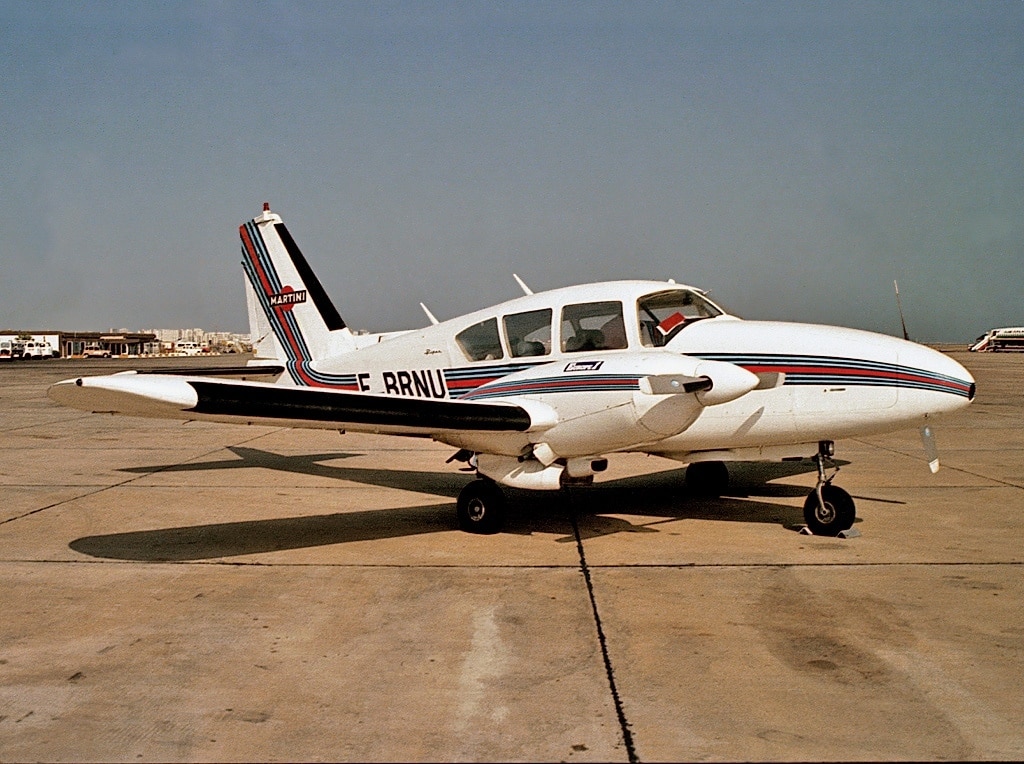With its twin piston engines and roomy six-seat cabin, the classic Piper PA-23 Aztec has long been a popular choice on the used aircraft market. I’ve always admired this vintage twin, so I decided to research what it really costs to purchase and fly the Aztec.
In this article, I’ll share details on the PA-23’s price tag, operating expenses, maintenance needs and financing options. Whether you dream of owning an Aztec or just appreciate classic airplanes, read on!
Table of Contents
Why Pilots Love the Piper PA-23 Aztec
Originally designed in the 1950s, the PA-23 Aztec won a following among pilots thanks to assets like:
- Twin fuel-efficient Lycoming O-320 engines provide solid performance and redundancy.
- Large cabin with club seating provides comfortable travel for up to five passengers.
- Excellent visibility from the front seats and large windows for passengers.
- Quality construction from an experienced manufacturer with history tracing to the 1920s.
- Proven airframe with great parts availability even decades after production ceased.
For pilots seeking a roomy piston twin with charming retro style, the Aztec remains an attractive choice today. Now let’s explore the costs.
What’s the Starting Price for a PA-23 Aztec?
Since the Aztec ceased production in 1981 after a remarkable 29-year manufacturing run, buying new isn’t an option. But many are still flying and the used market is reasonably strong.
For an Aztec built between 1957 and 1981 with low-mid time engines and in flyable shape, expect to spend $100,000 to $435,000. Models needing work can sometimes be found for under $75,000.
Key factors impacting price include overall condition, remaining engine times, avionics, paint and interior quality. As with any used plane purchase, careful pre-buy inspection is a must to know what you’re buying.
So while not cheap, a PA-23 can still be attained for a fraction of many modern twins. Their continued popularity makes ones in good shape highly sought after when they hit the market.
What Are the Annual Fixed Costs on a Piper Aztec?
Expect around $7,155 in annual fixed operating expenses for your Aztec including:
Hangar Costs
Figure $850 per year for indoor hangar storage. The Aztec’s nearly 37-foot wingspan needs space.
Insurance
For a 1960s-70s vintage twin, allow around $2,950 annually for decent liability and hull coverage.
Annual Inspection
This involved inspection will generally cost around $2,100 each year due to the Aztec’s complexity.
Engine Overhaul Savings
It’s smart to save around $650 yearly towards future engine overhauls. This major cost must be accounted for.
Miscellaneous Costs
Minor expenses like subscriptions and tiedown fees could cost around $605 annually.
So keep around $7,155 budgeted for annual fixed ownership costs.

Variable Operating Costs for the Piper Aztec
When flown, the PA-23 incurs variable expenses that for 100 annual hours will total approximately $23,796.
Fuel Costs
Each engine burns around 13.7 GPH. At $5.40 per gallon for 100LL avgas, figure on $148 per hour for fuel.
Oil Costs
Oil consumption is low, so allow around $5 per hour.
Engine Reserves
It’s wise to keep saving for engine overhauls at around $30 per hour.
Maintenance
Unscheduled maintenance may cost around $30 per hour, or $3,000 annually at 100 hours.
Miscellaneous Costs
Figure on $25 per flight hour for things like landing fees, tiedown costs and pilot supplies.
Variable costs depend directly on flying time. For 100 hours annually, budget around $23,796.
Total Piper Aztec Operating Cost Per Hour
When fixed and variable costs are combined and divided by 100 flight hours, the total cost per hour works out to approximately $310. Here’s the breakdown:
- Fuel Costs: $148/hr
- Oil Costs: $5/hr
- Engine Reserves: $30/hr
- Unscheduled Maintenance: $30/hr
- Misc Variable Costs: $25/hr
- Fixed Costs (Annualized): $72/hr
So while not cheap to operate, the Aztec provides twin-engine utility and roominess at a fraction of most twins.
How Do You Pay for a PA-23 Purchase?
Very few buyers can purchase an Aztec in cash. But creative financing makes ownership possible including:
Aircraft Loans
Banks may finance the purchase, normally with 20% or more down. Interest rates are higher than other loans. Compare multiple aviation loan providers.
Leasing
Leasing through a specialty finance company allows you to operate without buying outright. At the end of the multi-year lease you can optionally purchase.
Partnerships
Teaming with a partner or ownership group to share acquisition and operating costs can make the Aztec more accessible.
Business Ownership
There may be tax advantages to owning the aircraft through a business. Consult an aviation tax expert for guidance.
For pilots aspiring to own a classic twin, creative financing strategies make the PA-23 an achievable goal.
Is Buying a Piper Aztec Worth the Cost?
There’s no avoiding the fact that acquiring and operating a twin like the PA-23 requires serious financial commitment. Insurance, maintenance, engine overhauls and other expenses are far higher than a single.
However, for pilots who need a roomy piston twin capable of hauling passengers and cargo with two engines for peace of mind, the operating costs can be justified.
The Aztec provides great utility, proven reliability, and retro styling for those who appreciate classics. With prudent budgeting and financing, ownership is attainable.
Whether you’re able to buy one soon or admiring from afar for now, I hope this overview of ownership costs has provided helpful guidance. The PA-23 remains a beloved classic for good reason!